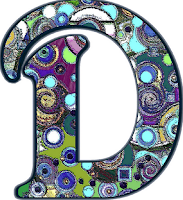BY CHARIS JOY JACKSON
Originally Published on The Independent Initiative
Today, I thought it might be fun to give all our CWD followers a bit of advice on how to write for film.
When it comes to knowing how to make movies, screenwriters should pay special attention to the dialogue they use for their characters. When it’s good, people don’t notice, but when it’s bad even your gran can tell.
You don’t want this.
I don’t want this.
So how do we write awesome dialogue?
There’s no magical formula -- creativity needs to breathe -- but I do think there are a few tools that can help you. Here are a few things I’ve found in creating awesome and strong dialogue.
THE SUBTLE ART OF SUBTEXT
My absolute favourite example of the subtle art of subtext comes from the classic When Harry Met Sally. It’s the final scene and Harry is professing his undying love for Sally (it’s about freaking time too) and then he waits for Sally’s response.
The novice writer for this romcom would have Sally say something like, “I love you too, Harry.”
But romcom genius, Nora Ephron, doesn’t have Sally say the mundane automatic response. Instead, Sally delivers the line in the clip below at 1:35, “... And I hate you, Harry ... I really hate you.” She’s saying, “I hate you” but her body language is professing her love.
This is perhaps one of the most obvious uses of subtext to date, but it’s brilliant. We love it. The audience loves it, the writers love it, and the actors love it because it allows them to speak the truth of the situation and not tell it through the words.
THE SUBTLE ART OF HOW NORMAL PEOPLE TALK
“Hello Jane, how are you doing today?”“Hello Bob, I am doing well. How are you doing?”
“Thank you for asking, Jane. I am not doing well today.”
“I am sorry to hear that Bob, why are you not doing well today?”
“Well Jane, I fell off my bicycle on the way to work and skinned my knees.”
Ok gosh, I can’t write any more of that! It’s too painful!
Clearly, we don’t talk in full sentences so as soon as you’ve got characters who talk like the above it sounds unnatural and bad. When it comes to your dialogue, it doesn’t have to be a dramatic change, it could simply be something like shortening “I am” to “I’m”.
For example how could you change the following?
“I am going to the store, is there anything you want me to get for you?”
There are many ways to change this to make it more normal, especially when you add on specific character traits of how someone talks. One person may use the word “like” more than another. Watching TV last night, I noticed how one of the characters says the word “honey” with every phrase. It doesn’t have to be a word you’d add, it could be the lack of words a person uses too.
If I took a look at the above example again, I may change it to something like this:
"Hey, going to the story, you want anything?"
THE SUBTLE ART OF HOW SILENCE IS LOUD
This is something not many people think of when it comes to dialogue, but it can be more powerful than any words you use; after all, a picture’s worth a million of them. Enter the beauty of visual storytelling -- filmmaking. We’ve got the best of both worlds. We get to weave magical words to create an epic film, but we also have the amazing power of a moving picture.
Is there a conversation where you can turn someone’s response into a look, or better yet, can you write a whole scene between two characters where the “conversation” isn’t spoken?
These are only a few of the several tools out there for making strong, awesome dialogue, I hope it’s inspired you to write your own phenomenal and creative dialogue. The beauty of these, is how they can be used for novels too!
Charis Joy Jackson is working as a missionary with Youth With a Mission (YWAM) a non-profit organisation & is part of The Initiative Production Company. She loves creating stories & is currently writing a novel, which she hopes to create into a seven part series.
Here's to a life lived in awe & wonder.
Welcome to the adventure.























